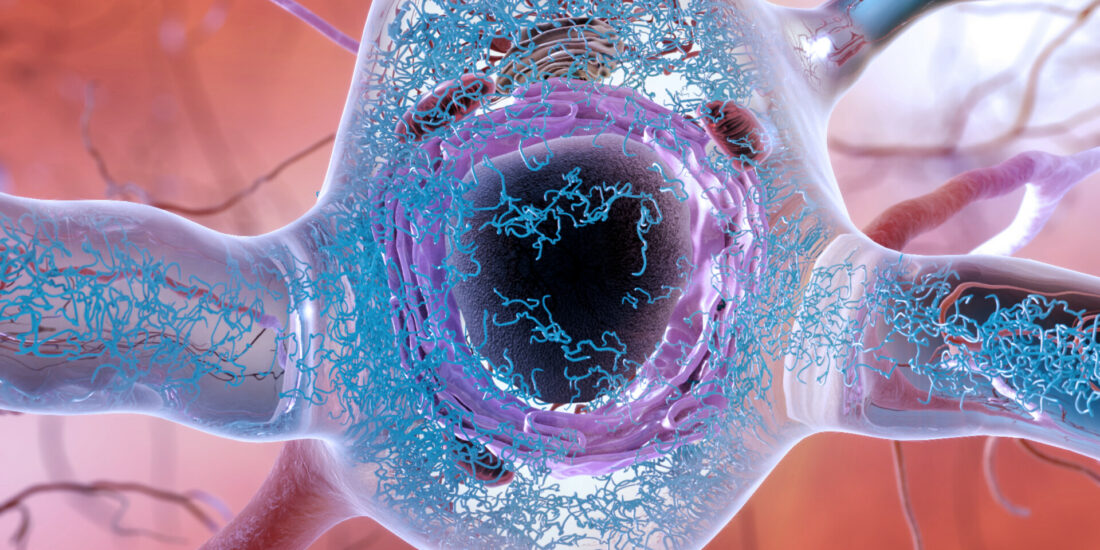Tau in the Pathophysiology of Parkinson’s Disease
By Lina Pan, Lanxia Meng, Mingyang He, and Zhentao Zhang Excerpt from the article published in Journal of Molecular Neuroscience 71, 2179–2191 (2021). DOI: https://doi.org/10.1007/s12031-020-01776-5 Editor’s Highlights Parkinson’s disease (PD), one of the most common neurodegenerative diseases, is currently incurable. The progressive loss of dopaminergic neurons in the substantia nigra pars compacta (SNpc) and the formation […]
Continue ReadingGenomic Action of Sigma-1 Receptor Chaperone Relates to Neuropathic Pain
By Shao-Ming Wang, Nino Goguadze, Yuriko Kimura, Yuko Yasui, Bin Pan, Tzu-Yun Wang, Yoki Nakamura, Yu-Ting Lin, Quinn H. Hogan, Katherine L. Wilson, Tsung-Ping Su, and Hsiang-en Wu Excerpt from the article published in Molecular Neurobiology volume 58, pages 2523–2541 (2021) DOI: https://doi.org/10.1007/s12035-020-02276-8 Editor’s Highlights Neuropathic pain is one of the most debilitating forms of […]
Continue ReadingGlioma-Derived TSP2 Promotes Excitatory Synapse Formation and Results in Hyperexcitability in the Peritumoral Cortex of Glioma
By Yao-Hui Wang, Tian-Lan Huang, Xin Chen, Si-Xun Yu, Wei Li, Tao Chen, Yang Li, Yong-Qin Kuang, and Hai-Feng Shu Excerpt from the article published in Journal of Neuropathology & Experimental Neurology, Volume 80, Issue 2, February 2021, Pages 137–149, https://doi.org/10.1093/jnen/nlaa149 Editor’s Highlights Seizures are common in patients with brain tumors. The risk of epilepsy development is […]
Continue ReadingStudy of the Relationship between Sigma Receptor Expression Levels and Some Common Sigma Ligand Activity in Cancer Using Human Cancer Cell Lines of the NCI-60 Cell Line Panel
By Evangelia Sereti, Chrisiida Tsimplouli, Elisavet Kalaitsidou, Nikos Sakellaridis, and Konstantinos Dimas Excerpt from the article published in Biomedicines 9, no. 1: 38, 5 January 2021, DOI: https://doi.org/10.3390/biomedicines9010038 Editor’s Highlights Many potential mechanisms of action have been proposed to mediate sigma ligands’ anticancer efficacy, including apoptosis , autophagy, lysosomal destabilization, mitochondria destabilization and ferroptosis. The most relevant MoA is related to either […]
Continue ReadingStimulation of Sigma-1 Receptor Protects against Cardiac Fibrosis by Alleviating IRE1 Pathway and Autophagy Impairment
By Jing Qu, Miaoling Li, Dongxu Li, Yanguo Xin, Junli Li, Song Lei, Wenchao Wu, and Xiaojing Liu Excerpt from the article published in Oxidative medicine and cellular longevity vol. 2021 8836818. 4 Jan. 2021, DOI:10.1155/2021/8836818 Editor’s Highlights Cardiac fibrosis is a common pathological process in the development of various cardiovascular diseases and the risk for […]
Continue Readingα-Synuclein modulates tau spreading in mouse brains
By Fares Bassil, Emily S. Meymand, Hannah J. Brown, Hong Xu, Timothy O. Cox, Shankar Pattabhiraman, Chantal M. Maghames, Qihui Wu, Bin Zhang, John Q. Trojanowski, and Virginia M.-Y. Lee Excerpt from the article published in Journal of Experimental Medicine, 4 January 2021; 218 (1): e20192193. DOI: https://doi.org/10.1084/jem.20192193 Editor’s Highlights Neuropathological data obtained from Parkinson’s disease (PD) […]
Continue ReadingSpinal mechanisms contributing to the development of pain hypersensitivity induced by sphingolipids in the rat
By Hong Wei, Zuyue Chen, Ari Koivisto, and Antti Pertovaara Excerpt from the article published in Pharmacological Reports 73, 672–679 (2021). 03 January 2021 DOI: https://doi.org/10.1007/s43440-020-00207-x Editor’s Highlights Dysregulation of sphingolipid metabolism has been associated with pathophysiological pain conditions. Among spinal receptors that sphingolipids, including DMS, can activate is the transient receptor potential melastatin-3 channel (TRPM3). In […]
Continue ReadingCalmodulin Supports TRPA1 Channel Association with Opioid Receptors and Glutamate NMDA Receptors in the Nervous Tissue
By Elsa Cortés-Montero, María Rodríguez-Muñoz, M. Carmen Ruiz-Cantero, Enrique J. Cobos, Pilar Sánchez-Blázquez, and Javier Garzón-Niño Excerpt from the article published in International Journal of Molecular Sciences 22, no. 1: 229. Published: 28 December 2020, DOI: https://doi.org/10.3390/ijms22010229 Editor’s Highlights TRPA1 is the only mammalian member of the transient receptor potential (TRP) ankyrin channel subfamily. There is […]
Continue ReadingWildtype σ1 receptor and the receptor agonist improve ALS-associated mutation-induced insolubility and toxicity
By Yasuharu Shinoda, Yudai Haga, Koichiro Akagawa, and Kohji Fukunaga Excerpt from the article published in Journal of Biological Chemistry . 2020 Dec 18;295(51):17573-17587. PMID: 33453999; PMCID: PMC7762949. DOI: 10.1074/jbc.RA120.015012 Editor’s Highlights Genetic mutations related to ALS, a progressive neurological disease, have been discovered in the gene encoding σ-1 receptor (σ1R). σ1R localizes preferentially to the […]
Continue ReadingRegulation of membrane NMDA receptors by dynamics and protein interactions
By Mar Petit-Pedrol and Laurent Groc Excerpt from the article published in Journal of Cell Biology 4 January 2021; 220 (1): e202006101. doi: https://doi.org/10.1083/jcb.202006101 Editor’s Highlights The N-methyl-D-aspartate receptors (NMDARs) are ionotropic glutamate receptors whose activation and calcium permeability play central roles in glutamate synapse physiology. NMDARs form protein–protein interactions with several transmembrane neurotransmitter receptors and ion channels […]
Continue Reading









